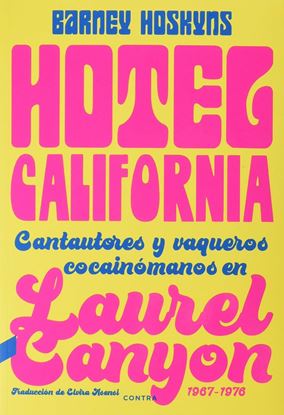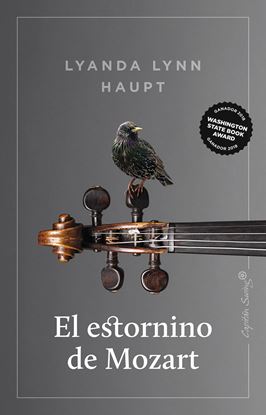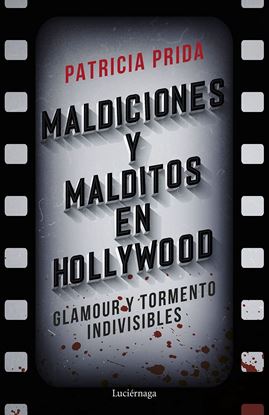

LOS SEÑORES DE LAS TIJERAS
En el presente libro, concebido como un gran reportaje, Vicente Romero nos narra la historia de la censura en el cine español, con especial atención a los cuarenta años de la dictadura franquista, cuando se ejerció un duro control religioso, militar y político no sólo sobre lo que se hacía en nuestro país, sino sobre lo que se importaba de otros. Diálogos suprimidos, argumentos tergiversados, imágenes cortadas... cuestiones que hoy nos generan una sonrisa, pero que no tenían nada de divertido para quienes los sufrían. De la mano de numerosos ejemplos, así como de entrevistas con los censores y con los cineastas que sufrieron estas humillaciones, ante los ojos del lector se despliega una crónica de la sociedad española, de quienes la dominaban con su intransigencia, un tiempo gris no tan lejano que, lamentablemente, parece que amenaza con volver.
995
EL TIGRE Y LA GUITARRA
El tigre y la guitarra es la historia de Yoichiro Yamada, un japonés que vino a España para ser guitarrista flamenco y jamás regresó a su país. Terminó abducido por dos mundos idílicos y en principio opuestos: el del flamenco que amaba y el de los samuráis de los que era descendiente. En su deriva no supo encontrar la salida a su propio laberinto. «¡Vuelve a casa!», le pedían sus amigos. Pero se negaba: no podía regresar porque no se había convertido en el guitarrista que soñó. El tigre y la guitarra nos habla del choque de universos paralelos, de pasiones y de obsesiones, pero también de hasta dónde nos arrastran nuestros pensamientos, del fracaso y de cómo los sueños que perseguimos pueden acabar persiguiéndonos.
995
HOTEL CALIFORNIA. CANTAUTORES Y VAQUEROS
A mediados de los sesenta, la música popular norteamericana dio un giro copernicano cuando la fábrica de hits de Nueva York se vio desplazada por los himnos aterciopelados y edénicos que empezaron a brotar de Los Ángeles de la mano del genial productor Phil Spector y grupos como los Beach Boys, los Byrds o The Mamas and the Papas. A partir de ese momento, una serie de artistas, que empezaron a reivindicarse como cantautores de sus propios temas, encontraron en las colinas californianas de Laurel Canyon y en sus alrededores un paraíso virginal —en plena naturaleza pero a un paso del fragor de la gran ciudad— donde establecerse, echar raíces y dar rienda suelta a sus canciones de corte intimista y reivindicativo. Locales como el Troubadour, en La Cienega Boulevard, empezaron a ser frecuentados por la nueva horda de músicos, que aspiraban a tocar sus canciones en directo frente a la exigente audiencia, formada en buena parte por los propios músicos y aspirantes a estrellas. Se iría así fraguando una de las eras doradas del rock norteamericano, que empresarios de la música como un joven y aguerrido David Geffen y su socio Elliot Roberts convertirían casi de la noche a la mañana en un emporio. De este modo, sellos como Warner/Reprise, dirigidos por los linces Mo Ostin y Joe Smith, o Asylum, del tándem Geffen/Roberts, apostaron por un repertorio de folk rock y nuevo country que vio nacer a cantautores y grupos de la talla de Neil Young, Joni Mitchell, Gram Parsons, Crosby, Stills & Nash, Jackson Browne, Linda Ronstadt, James Taylor, The Flying Burrito Brothers, The Eagles o Fleetwood Mac, entre muchos otros, que se convertirían en el nuevo canon del rock y el folk de la música norteamericana a base de música introspectiva y de raíces. Sin embargo, el idealismo, la solidaridad y el talento no tardarían en dar paso a un pandemónium de celos, consumo exacerbado de drogas y sobredosis, relaciones sentimentales tormentosas, éxitos clamorosos y caídas en picado que convirtieron el paraíso en un infierno de egoísmo y capitalismo desbocado que preconizó las maneras que la industria musical desarrollaría a partir de ese momento. Esta es la historia de los artistas de aquella generación, que alumbraron algunas de las mejores canciones de todos los tiempos y cuyo legado sigue más vigente que nunca.
995
EL ESTORNINO DE MOZART
El 27 de mayo de 1784, Wolfgang Amadeus Mozart se encontró en una tienda vienesa con un coqueto estornino que cantó una versión improvisada del tema de su Concierto para piano n.º 17 en sol mayor. Al percibir un espíritu afín en el joven pájaro, lo compró y se lo llevó a casa como mascota. Durante tres años, el estornino vivió con Mozart, influyendo en su obra y sirviéndole de compañero, distracción, consuelo y musa. Dos siglos después, los estorninos son vilipendiados incluso por los conservacionistas más compasivos. Como especie invasora no autóctona, invaden hábitats sensibles, compiten con las aves locales por los lugares de anidación y el alimento, y diezman los cultivos. La ornitóloga y naturalista Lyanda Lynn Haupt conoce bien las tensas relaciones de estas aves con otras especies y el medio ambiente. Pero, tras rescatar a una cría de estornino, quedó encantada con esa inteligencia y el espíritu juguetón que habían maravillado a su compositor favorito. Haupt explora el improbable y extraordinario vínculo entre uno de los compositores más apreciados de la historia y uno de los pájaros más comunes de la Tierra. Las historias entrelazadas de la mascota de Mozart y del estornino de Haupt ofrecen una insólita mirada a la amistad entre humanos y animales, al mundo secreto de los estorninos y a la naturaleza de la inspiración creativa.
995
MALDICIONES Y MALDITOS EN HOLLYWOOD
Entre las décadas de los años veinte y cincuenta de la pasada centuria, las películas, que comenzaron siendo curiosidades de gabinete en ferias, lograron convertirse en el mayor espectáculo del mundo. Los protagonistas de aquellos shows de celuloide que encandilaban al público desde la gran pantalla, pronto fueron erigidos como reyes dominantes del imaginario colectivo del siglo XX.
Pero aquel panteón cada vez más poblado de rutilantes deidades, albergaba asimismo siniestros y decadentes bastidores, plagados de sombras sin fin: espectros, maldiciones, muertes extrañas, crímenes sin resolver, adicciones, magia sexual, satanismo… Hechos misteriosos, sucesos estremecedores y, en ocasiones, atroces ocurrían entre el lujo y la fatalidad, entre el oropel y la decadencia.
Crueles destinos inexorables, tanto de numerosas estrellas, como de aspirantes a serlo.
995
ANILLOS Y MAZMORRAS
Quien mas quien menos se ha sentido atrapado en algun momento de su vida por alguna saga interminable repleta de señores oscuros, magos barbudos, espadas magicas, duendes, quimeras o elfos.El exito de dos nuevas superproducciones televisivas basadas en sagas literarias La casa del dragon, precuela de Juego de tronos, y Los anillos de poder, precuela de El señor de los anillos hacen de este un momento ideal para publicar un libro que de un repaso al genero narrativo que lleva un siglo arrasando.Historias apasionantes en las que el mal se enfrenta al bien encarnado en sus mas diferentes valores: la valentia, el honor o la honradez, aderezado siempre con un tono de epica. Y que el autor de este libro ha sintetizado con manos expertas y mucho conocimiento para hacer de ello un compendio de lo mas granado del mundo de la literatura, el cine, el comic o los videojuegos.Fantasia de leyenda: De Dragones y mazmorras a El ultimo unicornio.Un mundo de fantasia medieval de la mano de George R. R. Martin: Cancion de hielo y fuego.Fantasias para todos los gustos: De Willow a El priorato del naranjo.Fantasias camp: De Krull a La leyenda del buscador.Cronicas de la carcajada: de Mundodisco a Nimona.Una fantasia epica distinta: de la Saga de la Tumba Sellada a Step by Bloody Step.Videojuegos de fantasia: De World of Warcraft a Dragon Quest.
950














